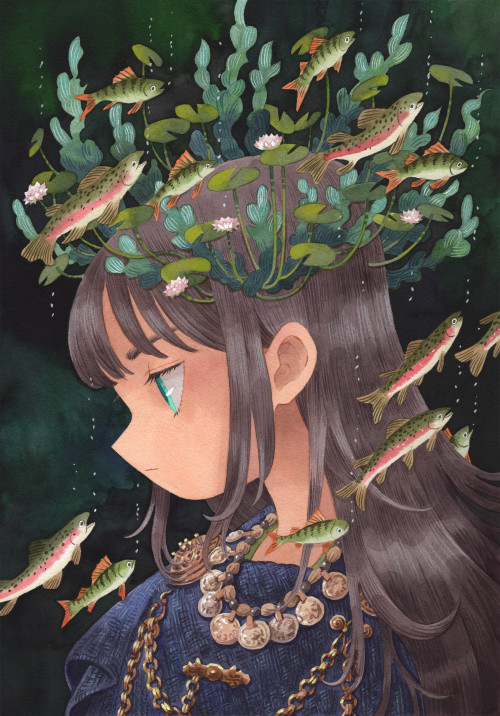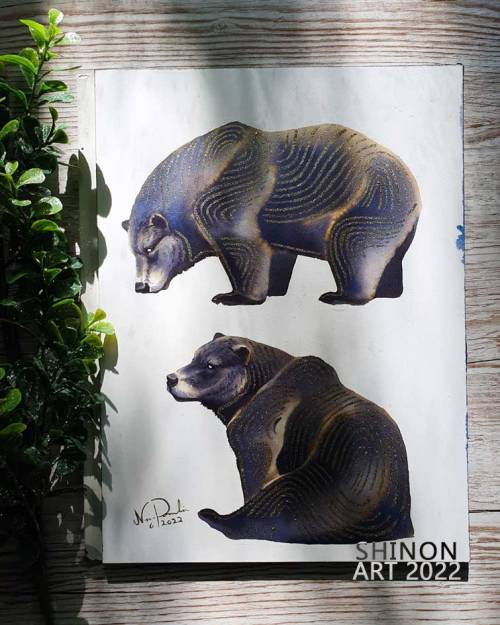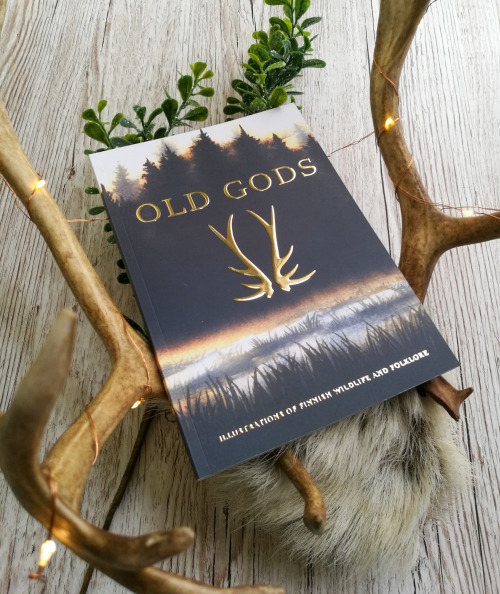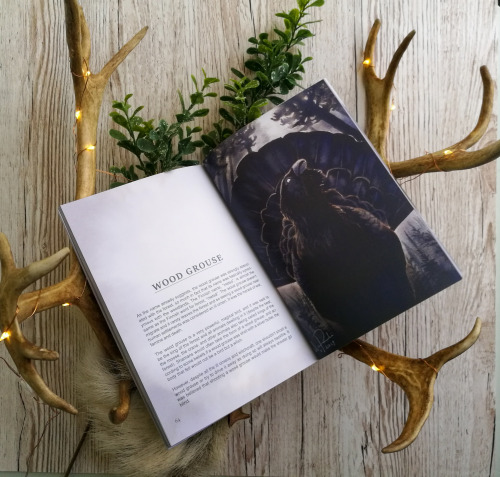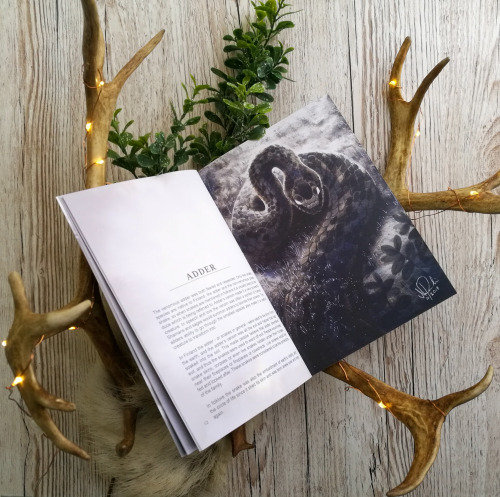#finnish folklore
Help make mythologiafennica better!
Good evening fellow friends of mythos!
As you might’ve noticed, I’m reviving this dear blog of mine and I was hoping you might help me with making it the best it can be. So following are a few thigs I’d like your opinions on:
The length of the posts – should I keep my posts short and simple, or go more in detail with longer texts? Short posts I might be able to provide few times a week, but if I’m doing longer texts it will only be one post per week.
The subjects – do you prefer general information or would you like to also hear my opinions on some matters?
Spells?– since quite a few of the people in this community are witches, would you like me to share old spells, in Finnish and freely translated to English? Would that be useful to you?
Other mediums outside of writing – should I make videos? I’ve been thinking about the possibility of videos but I’m not yet certain if that’s something I’d really be able to do well enough. Live Q&A’s might be fun?
Anything else? – is there something else you might have in mind that you’d like me to take into consideration whilst working on the revival of mythologiafennica? Feedback? I’d very much appreciate your opinions!
Thank you already and I hope you’re as excited as I am for what the future holds!
- Jona
So it happened one time in Jyväskylä, that a capercaillie flew to sit at the rooftop of a church and in no time, the priest of the church died suddenly. The next year died another priest, and soon enough the whole church burned down.
Omens have always played a big part in people’s lives, be they good or bad. Dog days (fin. mätäkuu, literally rot-moon) are still considered an ill time to perform any surgeries and if one gets a cut during the period it’s clear that the wound will take longer to heal. Old habits die hard?
So here’s a deep dive into omens and premonitions in Finnish folklore. Enjoy!
Martaat – animals as death omens
“Häviöksi pyy talossa, metsot miesten kuolemaksi”
(A loss in a home is a hazel hen, a capercaillie the death of men.)
Marras was usually a wild animal or game behaving out of the ordinary; passing through someone’s yard or trying to come into a house. The line between one’s home and the wilderness was a very distinctive one and once it was broken, it was certain that something bad was about to occur.
If one was out fishing and a fish then just jumped to the boat, it was definitely a marras, since life wasn’t supposed to be easy and good things that come without having to work for them can only be bad omens.
Here are some examples of martaat:
- redstart&nightjar: news of someone’s death would soon be heard
- wild animal on the yard: news of someone’s death would be heard
- wild animal in the house: death in the household
- death of a horse: the man of the house would die soon after
- death of a cow: the matron of the house would die soon after
- chicken running off to the woods: someone of the household would die
- forest grouse on the yard: someone of the household would die
- black grouse on the roof: a very bad omen, disease or death in the household
- woodpecker pecking the walls: very bad, disease or death in the household
- a bird flying into the house: definite death for someone in the household
- a bird flying to the window: if it dies, death, if it suffers, disease
- a mouse eating someone’s clothes: the owner of the clothing would die
- bugsorrodents appearing in the house: certainly death in the household
- hadrobregmus pertinax: also known as the deathwatch beetle, makes a sound like a ticking clock, which meant death for someone in the household
- hearingan owl: drowning
In fact, most birds were seen as bad omens or bringers of death rather than as good omens. All black birds, ravens and crows, were always death omens. It was also commonly believed that everyone had a sort of a soul-bird, sielulintu, that would come in to the house to take away the spirit of the dying person. Some might also see the sielulintu as the manifestation of the dying person’s free soul (fin. vapaasielu), which is already passing on to the next world, even though the body is not yet dead. This ties in with the three soul -concept, where one can lose their soul in more than one way.
Death omens
The gathering of kalmanväki (folk of death, the dead) around someone was a certain sign of death. Kalmanväki were the anonymous dead, those who had been deceased for so long that all signs of their living selves were gone and they were now a part of this bigger whole, kalmanväki. Other names for kalmanväki were keijukaiset (fairies) and menninkäiset (pixies.) They brought with them the reek of corpses and rot, they could manifest as vague spirits or f.ex as a swarm of flies.
During the turning points of the seasons, when the world of the living and the world beyond were closest to each other, one might easily spot death omens. If one went out during Christmas night and walked counterclockwise around the house three times and then looked inside, the people to die before next Christmas would look headless.
Bird omens
“Kuu kiurusta kesään, puoli kuuta peipposesta, västäräkistä vähäsen, pääskysestä ei päivääkään”
(One moon to summer from a lark, half a moon from a finch, a little still from a wagtail, zero from a swallow.)
Birds were seen as bringers of omens most likely due to their ability to fly and travel “unseen” to the world beyond. Birds could be seen as manifestations of dead loved ones, their acting and singing could be interpreted to bring about good or bad luck, a birth or a death.
A wagtail was a sign of good luck or upcoming fortune, a raven or a crow bringing an object to one’s house would also bring good luck. A starling stood as a sign for a fire, after seeing it one had to wash their eyes to shake away the effect. A redstart flying under a cow’s belly would turn the milk into blood. (To undo this, the bird would need to fly the same path in reverse.)
It was also very typical to think that seeing a bird on a certain time of day would ruin the rest of it, so birdwatching was not a common hobby. A magpie in the morning would bring about disease or illness, to hear migratory birds (swallow, lark, crane, cuckoo) singing in the spring morning before eating anything would ruin the whole summer for the one who heard the song. This ruin would stick to the person and then spread around with them. If they were to sow a field it would dry and bear no crop. They might also lose all luck in love. The most problematic thing about being ruined by a bad bird omen was that it could only be removed by seeing a good bird omen (and remember, there weren’t many.)
A way to protect oneself from the effects of these bad omens was to throw a somersault so that your back touched the ground or to bite on an alder tree, which was thought to be one of the most powerful trees due to it’s bloodlike colouring. The best way to spare oneself of the ill effect of bird omens was simply to eat the first thing in the morning. Breakfast is important!
Migratory birds were an important factor in foretelling. Following the migration was a good way to measure the seasons, and the weather the birds brought along would tell of the coming harvest season.
Other omens
- Huunpurema, huu: a bruise that appears for no apparent reason, meant someone close to you would die
- spider: luck with sheep herding would end if one killed a spider, otherwise just seeing a spider meant good luck
- arguing while fishing: no luck in fishing, this effect might stretch on for a whole generation
- a cat rubbing it’s eyes: female guests were to be expected
- a cat licking it’s butt: male guests were to be expected
- a cat gazing out a window: a storm was coming
- a dog howling in the direction of a house: someone in the house would die
- a dog howling towards the sky: a fire would come
- a strand of hay in a pig’s mouth: bad weather
- dropping a bread buttered side down: guests were coming
- cuttingbread so that it crumbles: an argument was arising
- finding a sixorfour leaf clover: good luck, better keep that safe, or eat it in order to gain it’s power
- finding a five leaf clover: oh dear, bad luck
- wearing a piece of clothing the wrong way around: good luck
- snatching a strand of hay from a woodpecker’s nest: congratulations, you are now a master of picking locks and can break and enter anywhere!
What sort of omens do you know of? I would very much like to hear them! Also do tell me if you think I have missed something here. Beware of bad omens!
You know the picture, dark silhouettes of people dancing frantically around a flaming red bonfire. Bare feet, love potions, sauna, odd rituals, a night that never comes, a sun that doesn’t set. You know the picture.
Even to this day Juhannus (’Midsummer’) has a special meaning to Finns. It’s completely normal to go ask your boss if you can leave the office a little early today since it’s Juhannus and you’re supposed to go to your cottage. (That is, if your boss hasn’t already left for the exact same reason.)
We burn our bonfires, we gather seven flowers, hop over seven fences and sleep with the tiny bouquet under our pillows in order to get a glimpse of our future lover in our dreams. But where do these old habits come from? What is Juhannus at it’s core? Well gather around the candle children, for I will do my best to unravel it.
The origin
As in many other European cultures, Juhannus is a celebration of fertility and light. During the pre-Christian times, this celebration was held in the name of the god Ukko. When Christianity started to gain hold the celebration got to carry the name of John the Baptist (fin. Johannes) since his birthday was supposedly celebrated around the same time. The old name, Ukon juhla (celebration of Ukko) held on in southern Karelia until the late 1800′s. In some dialects Juhannus is called mittumaari, mettumaari & messumaari.
The events
Certainly the most well known tradition associated with Juhannus is the bonfires. This originated from Karelia and was absorbed into the celebrations held across the country during the 1900′s. So this is in fact a fairly new part of the festivities. The bonfires are mostly associated with the cleansing of bad spirits and bringing about good fortune, good crops and healthy cattle.
Bathing in the sauna was done early in the day, so as to be clean and ready to take on the nightless night when the time came. The sauna and the house would be adorned with green leaved trees, most commonly birch and/or aspen. Young birch trees would be cut down and placed on either side of the main door and to frame windows. A thorough cleaning of the house was also considered an important tradition, as usual during the turning of seasons. The clean floors would then be covered with the leaves of rowan, aspen and bird cherry.
In parts of Ostrobothnia people set up a spruce tree on the yard (sort of like a Christmas tree, but trimming away all branches except for the very top, leaving a hat of sorts.) This tree then stood on the yard until kekri, harvest time. Whereas birches would be taken down quite soon after Juhannus was celebrated.
The magic
As is with so many other seasonal turning points, Juhannus was also seen as a time when the borders of the spirit world and our world thinned, and therefore it was a brilliant time for magical purposes. Love related magic was not only very popular but also easy for everyone to do. Juhannus was the time when one could catch a glimpse of their future, be it good harvest or a new lover.
The dew that covered the fields on Juhannus was seen as the very power of the crops and thus it held immense power. One would collect it from their own fields, store it and give it to the cattle when autumn came in order to strengthen the cattle with the force of summer before winter. The dew was also used to cure various common illnesses, either by drinking it or sprinkling it on the skin.
As concluded in my text about healing, people believed that the amount of good fortune was fixed, and therefore one could perform dark magic on the night of Juhannus and snatch away another’s good fortune by collecting the dew from their field and sprinkling it on their own. This way their crops would flourish as the other’s would shrivel and die.
The dew also provided help in powerful love spells. After a maiden who desired to be wed returned from watching a bonfire (or right after bathing in the sauna) she would roll naked in the fields belonging to a house where a desired partner lived. The powerful dew would then stick to the maiden’s skin, and furthermore, when the men of the house would later in the year eat the bread of the crops, the lust and desire would then get a hold of them as well. And they would then live happily ever after.
Here’s a little list of easy midsummer magic for seeing your future partner:
- place a four leaved clover under your pillow for the night
- place a wreath tied with nine strands of hay under your pillow for the night
- look into a well, naked, at midnight
- listen to the cuckoo singing in the night, each sound is one year until you will meet your lover
- walk around a triangle shaped field thrice, naked, and on the third time you will meet your lover
- the smoke from the bonfire blows towards the one to be wed soon
- if logs stood up after the bonfire burned low, there would be as many spinsters as there were logs standing up
- walking backwards towards a pile of logs after sauna would determine the kind of lover you would get, if your butt hit a log that was split in half your lover would be taken or married already, but if it was still whole your lover was single and would be your entirely
The myth
Aarni, the guardian deity of treasure, cleaned his treasure during the night of Juhannus. He would burn away the mildew and rust on his coins and jewels, creating a magical flame with a blue hue. This rare flame was called aarnivalkea (cf. wisp) and by following this blue light one might stumble upon a fortune.
One could increase their chances of spotting such a blue flame by looking for it through a ring shaped object; better still if the ring was formed naturally, such as a twig that had formed into the shape of a ring as it grew. A skull worked also, but it had to be fetched from the cemetery on a midsummer’s night. The best place to look for an aarnivalkea would be from high up a tree or at the crossroads where three roads met.
The journey to the treasure of Aarni was a perilous one during which one would meet all sorts of horrors from the world beyond, one of them being a mythical ox. If one was brave enough to hold the ox by it’s horns they might wake in the morning to see that they were holding a pot of treasure instead.
Pteridium aquilinum, bracken (fin. sananjalka, saniainen), was believed to bloom only on the night of Juhannus. It was believed that it used to be a beautifully blooming plant until someone had wiped her ass with the leaf of a bracken, and the poor plant was so ashamed of this that it only dared to bloom in the midst of midsummer’s night.
If one was lucky enough to see this mythical blooming they might also be able to snatch the seed of the bracken, which was believed to grant one magical powers, such as the ability to turn invisible. Another magical trick was to cut the bracken close to it’s root at a slant and then look at the black dots appearing on the surface. These would form the initials of, you guessed it, one’s future lover.
Getting drunk and being noisy during Juhannus was believed to bring about a good harvest and good fortune as well as banish bad spirits. So in honour of these ancient traditions, that is exactly what I plan to do this Juhannus, drink responsibly and make some noise to keep away the forces of evil.
Finnish PhD. Hholders are given a sword and a hat during a *Conferment Ceremony*. How more enticing could it be !!
This is enough motivation for me to study

Folktale Week 2019
I participated in “Folktale Week” over on Instagram for the first time this year and had a blast!
5. Darkness - Folklore from many cultures include an explanation for the Northern Lights that appear in the dark of winter. My favorite comes from Finland, where the Northern Lights are known as Revontulet, “Fox Fires.” The elusive Firefox, while running through the dark landscape, generates sparks against the trees, which creates the Northern Lights. In another version of the tale, the running Firefox kicks up snow that reflects light as it hangs in the frozen air.
Post link
Folktale Week 2019
I participated in “Folktale Week” over on Instagram for the first time this year and had a blast!
3. Path - In Finnish, the Milky Way is known as Linnunrata, “The Bird Pathway.” During migration seasons, Finnish folklore says that the birds would follow the path of the stars to and from Lintukoto “Bird Home,” a warm paradise at the ede of the world. Mordern-day scientists have actually proven that birds due use the stars to navigate!
Post link
Explored the ink + gold style I used in the recent Kokko painting a bit further!
I call this one a little
exbeariment.
Post link
ORIGIN OF FIRE
Ukko of the air struck fire,
produced a sudden flash
with three feathers of Kokko,
the eagle of fire,
in the sky above,
behind the enclosure of stars.
My contribution for an exhibition on Finno-Karelian mythspace, centered around an animated short by Katrin Lebedev.
If you are in/visiting Finland this summer and are interested in visiting the exhibition you can find more information about it here!
https://www.juminkeko.fi/tapahtuma/karelore/
Post link
OLD GODS - Illustrations of Finnish Wildlife and Folklore is now up on Etsy!
OLD GODS is a collection of illustrations about Finnish wildlife and the myths and beliefs related to different animals. The artwork explores the mystical nature of many animals and portrays each as as ancient Finn could have seen them.
This zine features 33 ink illustrations, each accompanied by a written introduction to Finnish mythology and folklore related to the animals. The book also includes a step-by-step process for one of the paintings from start to finish.I’m super happy with how this turned out and so proud that I was able to bring this project to life!
Only a handful of copies left! A reprint is estimated to happen at some point in 2022.
OLD GODS is back in stock!
Post link

